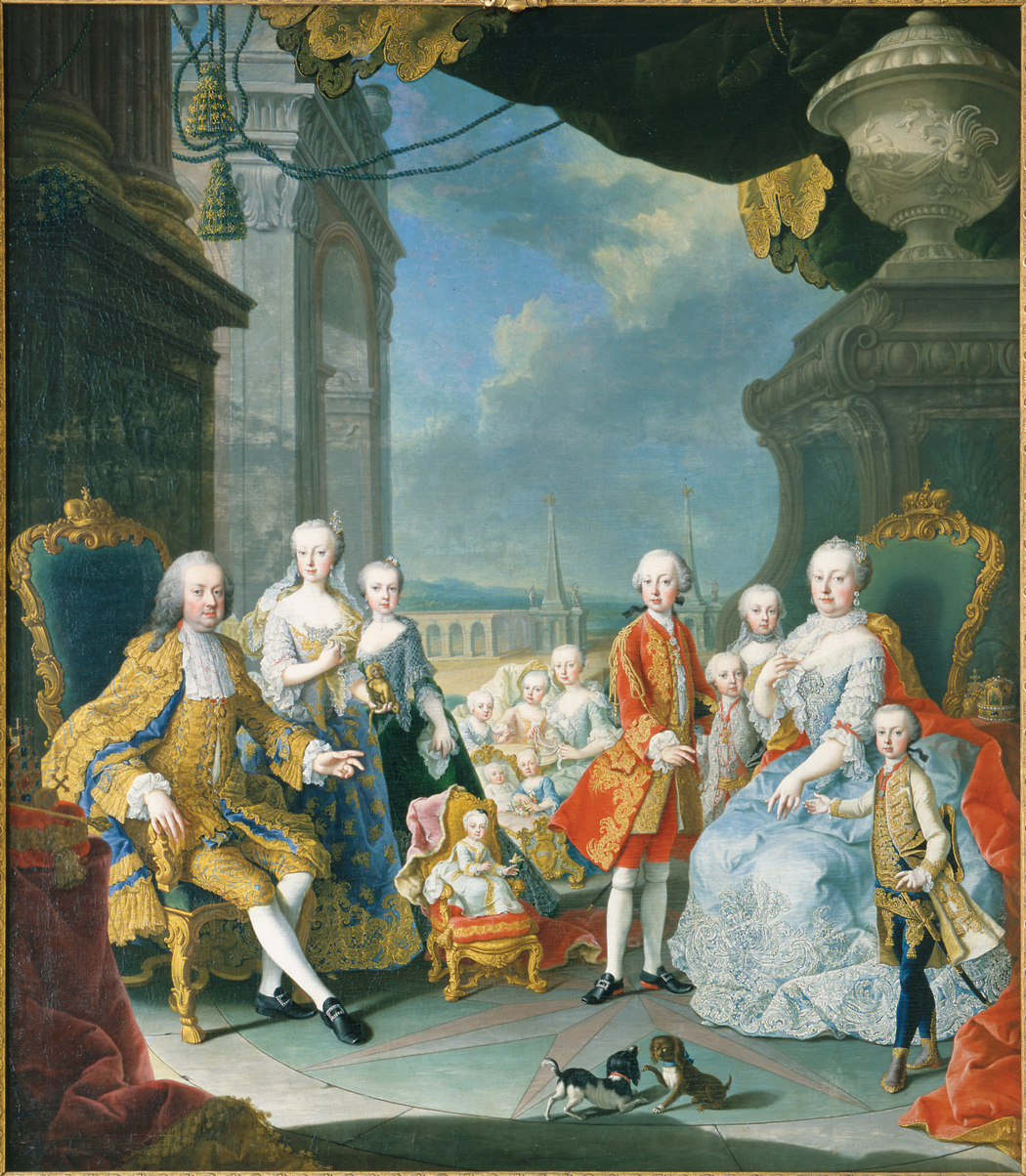Maria Theresa (1717-1780) was one of the most beloved rulers in Austrian history. A member of the Austrian Habsburg royal family, she was a powerful force in European affairs. She served as queen of Hungary and Bohemia, archduchess of Austria, and Holy Roman empress. She skillfully managed foreign affairs, and her economic reforms promoted the prosperity of her empire. Maria Theresa had 16 children, including Marie Antoinette, who became queen of France (see Marie Antoinette).

Maria Theresa was born in Vienna on May 13, 1717. She was the oldest daughter of Holy Roman Emperor Charles VI. In 1724, Charles, who had no sons, issued his Pragmatic Sanction, a decree that enabled Maria Theresa to inherit the Austrian lands in the absence of male heirs. The main European powers accepted the decree and promised not to attack.
After Charles died in 1740, however, these promises proved empty. Frederick II of Prussia attacked first, seizing the rich Austrian province of Silesia. Bavaria, France, Spain, Sardinia, and Saxony soon followed, threatening to take most of Maria Theresa’s lands in what became known as the War of the Austrian Succession. Sardinia and Saxony later changed sides, joining Britain and the Netherlands in aiding Maria Theresa’s forces. In 1745, Maria Theresa’s husband, Francis Stephen, was elected Holy Roman emperor as Francis I. Although he wore the imperial crown, she remained in control as ruler of the Austrian Habsburg lands. When the war ended in 1748, Maria Theresa lost almost all of Silesia to Prussia, plus some land in Italy. The powers of Europe then recognized her remaining possessions.
Following the war, Maria Theresa worked to build a stronger government and an army to win back Silesia. But before she could attack, Frederick II struck again. The Seven Years’ War (1756-1763) followed, and Maria Theresa was forced to give up Silesia for good. She then concentrated on improving life in her remaining lands. Her reforms included improvements in law, education, peasant life, and religious tolerance. After her husband died in 1765, her son was elected Holy Roman Emperor Joseph II, and she began sharing authority with him. With the help of her chancellor and foreign minister, Prince Kaunitz, Maria Theresa worked to promote Austria’s growth. In 1772, she acquired the region of Galicia from Poland. She added the region of Bukovina from Turkey in 1775 and part of Bavaria in 1779. Maria Theresa died in Vienna on Nov. 29, 1780.
See also Pragmatic sanction; Seven Years’ War; Succession wars.
